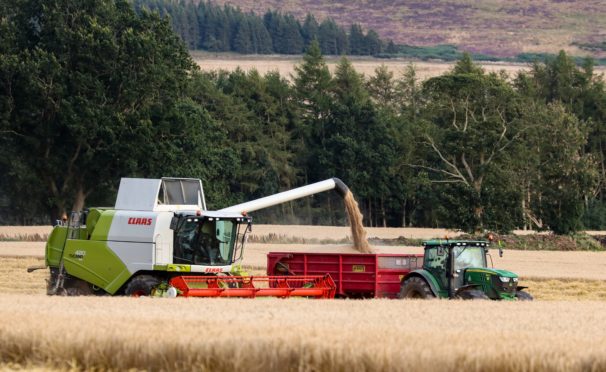The first official estimates of Scotland’s 2019 harvest predict a yield increase of 26% on last year and a possible rise in production of 29% to 3.2 million tonnes.
However, the farmers’ union cast doubt on the cereal and oilseed rape harvest figures, published yesterday by Scotland’s chief statistician, saying that while its own survey results also showed yields were up “on balance”, it was not to the degree suggested by the official estimates.
The government forecasts confirm that, while there are some concerns about grain quality as a result of mixed weather, on the whole the 2019 harvest is considered to be a good one.
The total area of cereals grown increased 2% in the last year to 430,000 hectares, with Scotland’s main crop – spring barley – expected to see a rise in yield and production despite a 3% drop in area.
A growth in the area of winter barley is predicted to lead to an 18% increase in yield and a 53% rise in production.
Wheat, oats and oilseed rape are also all expected to see increases in yield compared to 2018.
Meanwhile, the results of the June Agricultural Census, also released yesterday, show the number of people estimated to be working in the industry increased slightly by about 1% to 67,100.
The results also highlight mixed fortunes for Scotland’s different farming sectors.
Potatoes, winter oats and soft fruit production is on the rise, with blueberries continuing to take over from raspberry production, which is now taking up less than half the area it was in 2009.
On the livestock front, sheep numbers are up 1% (+82,700) but cattle continued their downward trend, falling 2% (-27.600) to reach their lowest point since the 1950s.
The statistics also showed poultry numbers remaining relatively steady over the past year at 14.9 million chickens, with the number of egg-laying birds outnumbering the number of birds for meat.
The area of rented agricultural land remained relatively constant over the year.
nnicolson@thecourier.co.uk







